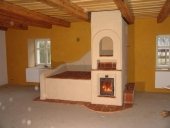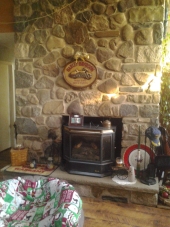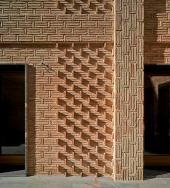Howdy, Permies,
I've not been idle, just busy with lots of different things. Thanks to Glenn & Thomas for your input, and to Peter for lots of rocket-y project inspiration in the forums recently, too.
Specific answers to specific questions: I am planning a double brick bell, 2in air gap between the layers (because 4in x 8in brick). I am planning a 6in system, as Thomas astutely suggested, and I get ~58ft^2 of ISA in the layup I have sketched.
I've rough-sketched the space I am working with, dry-stacked a mock core to get a sense for the size and brick count. The core concept is straight from Peter's website,
batchrocket.eu, but I do have a few questions.
The chimney as shown is 10 courses high (47in from plinth to top due to base layer), but this will push my roof high, and increase the ISA for the footprint that I am targeting. I do think I may want to extend the body by 1/2 or 1 brick, because some of the log rounds I get are pretty long.
Should I narrow the inner bell to reduce ISA, or can I make the core chimney shorter?
I know the throat, where the draft is pulling into the chimney, is a very sensitive region for setting the fluid flow. Is dead-center best, or is a slightly-off-center throat effective? Dead-center demands a dual-vortex in the chimney, as the flow splits at the back wall. Off-center will set the direction of a single vortex, which will have more energy and less drag. I'm liable to import "conventional" combustion ideas into RMH-land, so I want to be careful. I'm leaning on Peter's spreadsheets for details of the cross-section.
Has an off-center throat been explored?
In order to keep the chimney relatively near the wall, can the outer bell be notched/skipped at the exhaust region? The brick structure would be weaker then, and lots of half-bricks would be needed, assuming it's best to not tie into the inner bell there, but it would buy a much tighter installation. The wall has a chimney penetration that I plan to use, as it's a busy wall near the electrical panel, and I won't cut new holes in it, so I can't penetrate the wall low and do the rise on the far side.
Is notching the outer bell to embed the chimney a dumb idea?
I'm assuming based on some ash cleanout discussions that a pair of service doors through the bells, near the chimney intake, would be advisable. I'd think this ought to be two separate doors rather than an assembly, to avoid a thermal bridge between the bell walls. The operability of the doors can be poor (like, threaded fasteners), since it sounds like the frequency of use would be every-couple-years.
I'm game to embed thermocouples in the nested structures, and would love some suggestions of where key points might be. K-types should be fine, cable lengths may be restrictive (3, 6, or 9ft)
Thanks again to all the rocketeers here! I'm hoping to get lots of vicarious experience from y'all, to reduce the number of mistakes I have to make along the way, but I'm sure there will be plenty left for me to make!
Happy heating,
Mark


 11
11





 8
8




![Filename: 20250112_152914.jpg
Description: [Thumbnail for 20250112_152914.jpg]](/t/279820/a/264699/20250112_152914.jpg)
 6
6










 5
5








 7
7








 7
7




 7
7












